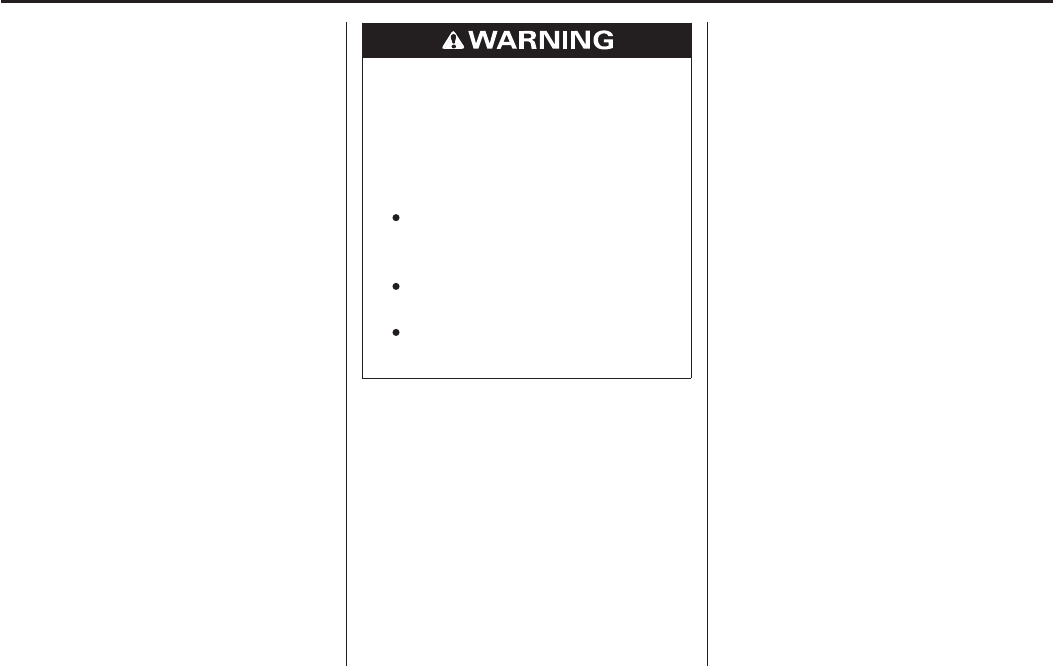Manual
Table Of Contents
- COVER
- INTRODUCTION
- A FEW WORDS ABOUT SAFETY
- CONTENTS
- OUTBOARD MOTOR SAFETY
- CONTROLS AND FEATURES
- BEFORE OPERATION
- OPERATION
- SERVICING YOUR OUTBOARD MOTOR
- THE IMPORTANCE OF MAINTENANCE
- MAINTENANCE SAFETY
- TOOL KIT AND OWNER'S MANUAL
- EMERGENCY STARTER ROPE
- MAINTENANCE SCHEDULE
- TRIM TAB ADJUSTMENT
- MANUAL RELIEF VALVE
- ENGINE COVER REMOVAL AND INSTALLATION
- REFUELING
- FUEL RECOMMENDATIONS
- WATER SEPARATOR INSPECTION AND SERVICE
- FUEL FILTER INSPECTION AND REPLACEMENT
- PORTABLE FUEL TANK AND TANK FILTER CLEANING
- ANODE REPLACEMENT
- PROPELLER REPLACEMENT
- STORAGE
- TRANSPORTING
- TAKING CARE OF UNEXPECTED PROBLEMS
- TECHNICAL AND CONSUMER INFORMATION
- INDEX

Gasoline is highly
flammable and explosive.
You can be burned or
seriously injured when
handling fuel.
Stop the engine and keep
heat, sparks, and flame
away.
Handle fuel only
outdoors.
Wipe up spills
immediately.
108
STORAGE
Remove the engine cover (p. ).
Release the drain tube from the
projection of the intake manifold
and set the end of the tube toward
the outside of the engine undercase.
Place an approved gasoline
container below the fuel drain
outlet, and use a funnel to avoid
spilling fuel.
Tilt the outboard motor up all the
way. Leave the outboard motor
tilted up until the gasoline stops
flowing.
After thoroughly draining, tighten
the drain screw securely and return
the outboard motor to the vertical
position.
Secure the drain tube to the
projection of the intake manifold.
Drain the fuel tank into an
approved gasoline container or, if
you need to store fuel in the fuel
tank, you can extend fuel storage
life by filling the fuel tank with
fresh gasoline and adding a fuel
stabilizer that is formulated for
that purpose.
Loosen the vapor separator drain
screw.
4.
5.
6.
7.
1.
2.
3.
84
08/08/04 18:54:59 31ZY9600_109










